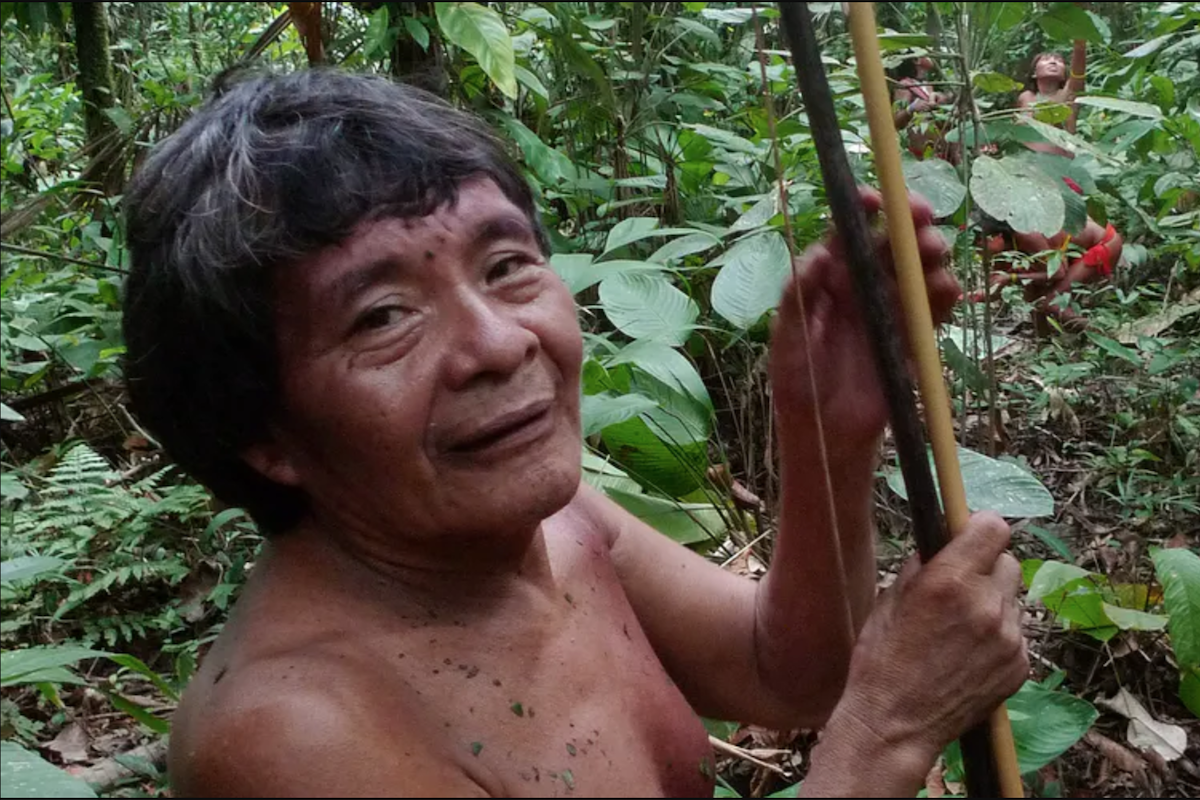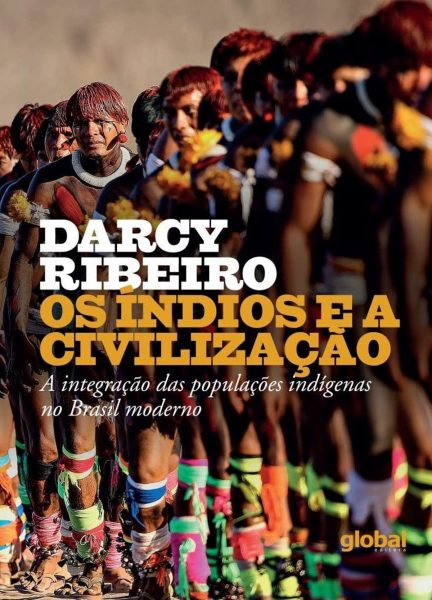

Antonio, from the Yanomami village of Watoriki, photographed in November 1992. After contact with Brazilian society in the 1970s, more than half the Yanomami population died from infectious diseases. (William Milliken, Author provided)
By François-Michel Le Tourneau, École normale supérieure – PSL and William Milliken, Royal Botanic Gardens, Kew
The current situation of a global pandemic invites reconsideration of similar situations that happened in the past, such as the great plague in Europe in the 14th century, or the successive and devastating influenza and measles epidemics (amongst others) which decimated indigenous populations in the post-Columbian era in Latin America, and especially in the Amazon. There, in indigenous villages, people got sick and quickly died, and subsistence activities were disrupted because crippled people were too weak to gather food or tend their agricultural plots. This story unfortunately played out until a few decades ago.
Among many indigenous groups, the Parakanã experienced it when opening the Transamazonian highway (see John Hemming’s book Die If You Must: The Brazilian Indians in the 20th Century). After contact with Brazilian society in the 1970s, more than half the population of the Yanomami, and the Matis (Vale do Javari) died from epidemics. Most of them witnessed lethality rates equal or superior to 30%—an incredible toll on any society (Covid-19 lethality is approximately 2%, and perhaps lower). Despite recent, better-organized contacts, hepatitis B and D epidemics continue to afflict recently contacted populations such as the Korubo in the Javari valley, adding the toll of malaria and influenza.
With Each Contact, an Epidemic
Given the disruption of economic and social activities in our lives today, it is difficult to overstate the impact of the epidemics on indigenous populations after Europeans came to the shores of the Amazon.
Like us, indigenous peoples were caught by an invisible enemy and had to choose between severing social and economic ties between villages and families or confront infection and death. In the case of the Yanomami, epidemics appeared during each of their initial contacts: in 1959 with the Brazilian Border Commission; in 1967 with the New Tribes Mission; in 1973-74 with the Perimetral Norte road construction and in 1987-1990 with the illegal gold miners. They soon suspected that the incomers were the source of the problem and attributed the disease to the smell of the grease that wrapped the metal tools they were given: their word for disease is xarawa which also means fume or smoke. The desirable and useful metal tools were a source of mortal danger, in what may be an early tale about epidemics and globalization.
Previous experiences by indigenous peoples in the Amazon might assist a critical look at what is happening now in Brazil. Recently the Brazilian National Indian Foundation (FUNAI) banned external entries to indigenous territories to prevent transmission of the COVID-19 disease, which might wreak havoc in populations with low resistance to any kind of respiratory illness. But at the same time, President Jair Bolsonaro is aiming to alter the law so that mining companies could enter indigenous territories and, with his tacit approval, thousands of illegal gold miners are currently extracting gold in many of them, especially the Yanomami territory, which FUNAI will not be able to prevent.
Bolsonaro also appointed Ricardo Lopes Dias, a former missionary of an evangelical church known for aggressively seeking contact and evangelizing indigenous peoples, as head of FUNAI’s department for isolated and recently contacted tribes. It is feared that the FUNAI’s policy of “leave them alone unless there is a good reason” in relation to isolated groups may be changed, leading to further potentially disastrous contacts.
A ‘Pristine’ Jungle That Never Was
The disappearance of the indigenous populations of the Amazon explains, in part, assertions by anthropologist Betty Meggers in her 1954 article “Environmental Limitation on the Development of Culture”, that the rainforest does not allow for large villages due to resource scarcity. Today, however, naturalists, ethnobotanists and archaeologists are compiling more and more data that proves that the Amazon was probably relatively densely populated. What happened to indigenous peoples in the Amazon during the 20th century also sheds light to the colonial period. Epidemics were frequent, sometimes deliberately sowed by Europeans (see Os Indios e a civilização, by Brazilian anthropologist Darcy Ribeiro). Regrouping Indians around missions turned out to be a source of dissemination for diseases, and interethnic conflicts incited by the colonists wiped out an unknown number of people and tribes. Father Acuña, who was on the Pedro Teixeira expedition in 1637-38, describes numerous villages and thriving life along the banks of the Amazon, but a few decades later this region will be seen only as the realm of nature: a “pristine” forest.
The rainforest has been heavily transformed by indigenous peoples, and it is only the untrained Western eye that cannot accept human influence can be present —and lasting— in the apparent disorder of the forest. Uncovering big earth structures, heavily modified soils, innumerable traces of villages and plant domestication, we are now able to see how a whole world of thriving civilizations disappeared.
The disappearance probably occurred in two ways. The first one by the collapse of villages/networks, such as the Marajoara civilization of the Amazon estuary. Only a few items, especially funerary urns, earth mounds and canals, yet once a thriving and complex civilization existed. The second may have been adaptation and the simplification of lifestyles to escape both the epidemics and the predation by slavers or missionaries (See A. Roosevelt’s book Moundbuilders of the Amazon: Geophysical Archaeology on Marajó Island, 1991). Current hunter-gatherer groups may in fact be remnants of older civilizations that adapted and chose to be mobile in order to escape destruction.
The vision of the Amazon as a relatively densely populated region, and a center of dissemination of cultivars and civilizations is now recognized among the scientific community and has recently been passed to a wider audience, as the recent communication around archeological discoveries in the Mamiraua reserve, the Tefé National Forest or in the Llanos de Moxos (Bolivia) show. However, a great number of people continue to perpetuate old images of “the world’s last virgin forest” each time the Amazon is threatened by fires or deforestation. Maybe now that we are faced with the consequences of a global pandemic, we can start rethinking, and accept that its population was wiped out principally by disease and predation. Likewise, how indigenous peoples of the Amazon transformed the forest and adapted it to their needs without destroying it.
Pulling Back From the ‘Tipping Point’
When the Covid-19 pandemic is over and the world starts thinking again about our impact on the environment, such an example might prove inspiring, especially at a time when the Amazon forest is at the “tipping point” and repeatedly faces giant fires.
We might also want to reflect on the fact that advances of Western-style consumption of remaining forests can be the sources of new diseases, especially of viruses passing from animals to humans like Ebola. Like a boomerang, such diseases currently strike us in the same way that indigenous peoples across the world were struck by germs that were disseminated at the time of the colonial conquest.
The authors wish to acknowledge Bruce Albert, author with Davi Kopenawa of “The Falling Sky”, and Fiona Watson, of Survival International, for their contribution.
This article is republished from The Conversation under a Creative Commons license. Read the original article.



